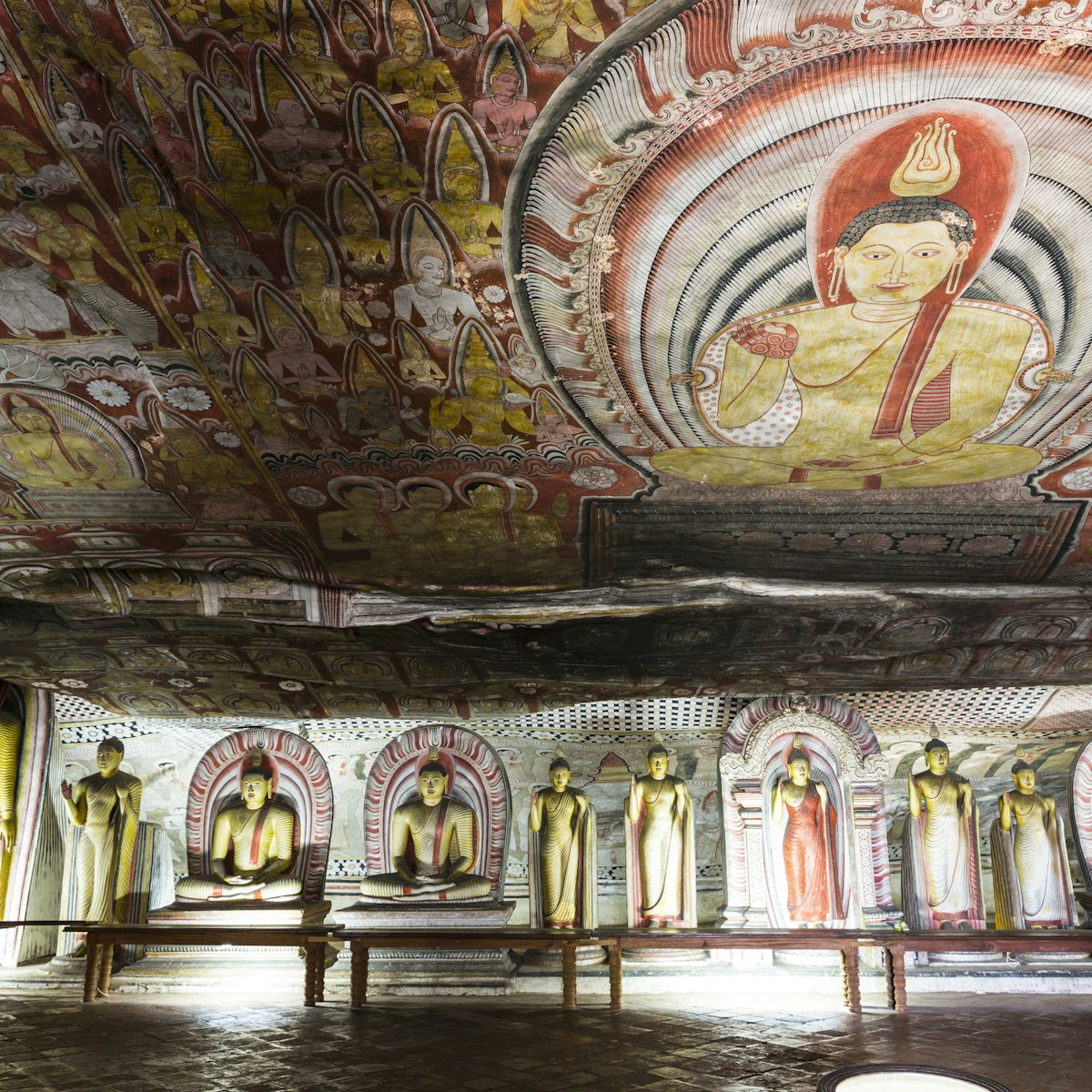Set in the foothills 3km north of Matale, surrounded by giant boulders, this monastery is a low-key, but intriguing, site. There's a charming series of Buddhist caves, religious paintings, and a stupa or two. It's easily accessible just off the main highway.
Legend has it that a giant used three of the rocks as a base for his cooking pot, and the name Aluvihara (Ash Monastery) refers to the ashes from the cooking fire.
The first two caves contain 10m reclining Buddhas and impressive lotus-pattern murals on the ceilings. The second cave is filled with cartoon-like murals of the realms of hell to keep potential sinners on the straight and narrow. A set of garish statues in a gruesome side temple depicts a sinner with his skull cut open and his brains being ladled out by two demons.
Behind a boulder is a cave dedicated to Buddhaghosa, the Indian scholar who is supposed to have spent several years here while working on the Buddhist canon known as the Tipitaka. The Tipitaka was first transcribed from oral and Sinhalese sources into Pali text by a council of monks held at Aluvihara in the 1st century BC.
Stairs continue to the top of the rock bluff, where you’ll find a dagoba and sweeping views of the surrounding valley.
Look to the hillside above you and you'll see a huge seated golden Buddha offering protection and blessings with an abhaya (palm facing-outward) gesture. A path leads from behind the museum for the stiff 30-minute uphill hike here.
The small museum at the entrance is worth a short visit. There's an example of one of the many Tipitaka texts rewritten on palm leaf after the Aluvihara library was destroyed by British troops putting down a revolt in 1848. For a donation the caretaker will show you how to prepare traditional ink and inscribe your name on a small length of ola (palm-leaf).
A three-wheeler from Matale to Aluvihara costs about Rs 400 return, including waiting time; the bus fare is Rs 10.







